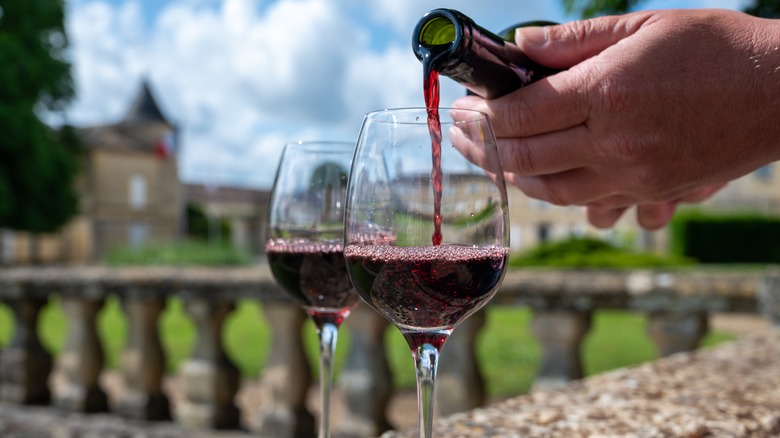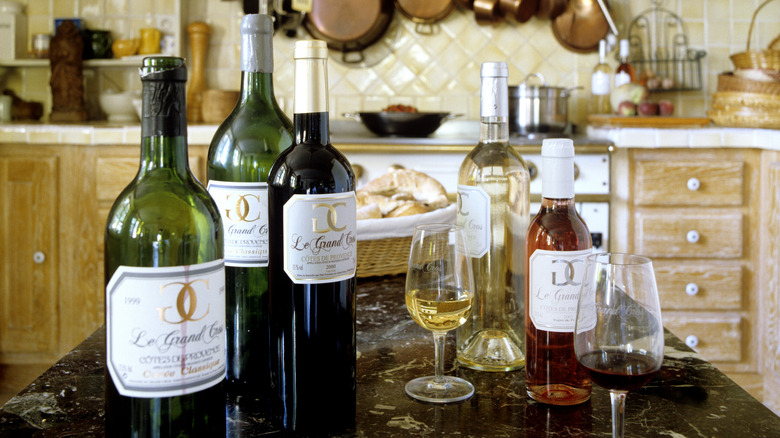Why French Wine May Have More Alcohol Than You Realize
While the rewards of knowing French wine are incredibly worthwhile, there's a learning curve. If you decide you want to understand more than "this tastes good," you'll explore the different wine types of France, how to make classic wine and food pairings, and the etiquette around serving wine in France. And, of course, you'll learn to interpret the basics of a French wine label — there's the producer, the vintage year, the designation of origin, the quality, and where it was bottled. All of those things are clear cut, but there's one other important French wine-label element that's a bit trickier, which is the ABV, or alcohol by volume. Winemakers are actually allowed to fudge the numbers a bit, so the wine you're buying might in fact have a slightly higher alcohol content than what you're reading. Once you know this, you can shop and consume accordingly.
By law, winemakers in France must clearly print the alcohol content of their wine on the bottle's label. But wines that clock in at or under 14% can actually legally print a number that's just within a 1.5% range, meaning that if a wine is 13%, it's perfectly fine for the winemaker to write 11.5%. Considering that it's common for wines to fall into an 11% to 13% ABV range to begin with, that means that a substantial amount of wines can benefit from this wiggle room, meaning many French wines on shelves could pack another percentage or so of a punch.
Why French winemakers can print a lower ABV percentage
Why are French winemakers allowed to print an alcohol percentage anything other than the precise amount in the bottle? For starters, winemakers in other countries are allowed to do this, too. In the United States, winemakers can also print within 1.5% for wines 14% or lower, and within 1% for wines higher than 14% — which often has to do with taxes. Wines above 14% are taxed at a higher rate, so if your wine is 14.5% and you're allowed to print 13%, you might as well in order to pay lower taxes.
Timing, however, is the primary factor for French wine. Just like American winemakers send their proposed labels into the Alcohol and Tobacco Tax and Trade Bureau for approval, French winemakers submit to the Appellation d'Origine Protégée. Approvals take time, and winemakers want to get their wines on shelves, so they might submit before their wine is completely done settling — which means the final product may have a percentage or so more or less of alcohol. Plus, when a winery just wants to release a wine again where the only change is the vintage year, they don't have to re-file for approval as long as the ABV is still within that range, which it's likely to be. The wiggle room makes sense and allows winemakers to efficiently get us the wine we love — we just have to be prepared for the possibility of slightly more booze.

